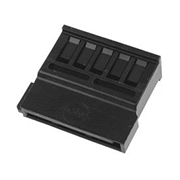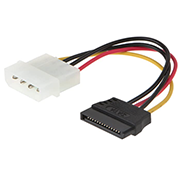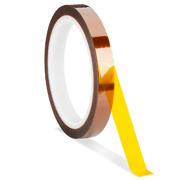- Home
- Store
- Removable 3.5″ Enclosures
- Multiple Bay
- MB901SPR-B R1
MB901SPR-B R1
The FatCage RAID MB901SPR-B R1 is a dual 2.5"/3.5" SATA drive removable RAID 1 & JBOD mobile rack enclosure. It fits into two 5.25" bays, offering flexible storage configurations with easy drive access.
- Brand: Icy Dock
- SKU: 4713227445764
- Shipping:
Learn More
- The FatCage MB901SPR-B R1 is a dual bay RAID 1 & JBOD enclosure that supports 2 x 2.5" SATA SSD/HDD or 3.5" SATA hard drive in a 2 x 5.25" optical drive bay of your computer/workstation/rackmount system. The MB901SPR-B R1 is equipped with built-in hardware RAID chipset and easy-to-read RAID status LED indicators, letting you effortlessly mirror the 2.5" or 3.5" drives for data redundancy and monitoring the RAID status without pairing with a RAID card or using RAID monitoring software. In addition, the built-in RAID chipset does all the calculations without using the system resources, which improves the system's performance compared to motherboard RAID or software RAID. Finally, the removable drive trays and hot-swap feature let you replace a failed drive without shutting down the system, making the MB901SPR-B R1 a perfect drive enclosure for any mission-critical computing system, such as industrial automation systems and file server systems.
- Built-In RAID 1 & JBODWith the built-in JMS562 RAID chipset, you can effortlessly add a RAID 1 array to any computer system that uses a SATA connection without needing a RAID controller card or RAID-compatible motherboard. Simply connect the FatCage RAID enclosure to the system's SATA and power ports, insert 2 x 2.5" or 3.5" drive, and the FatCage automatically mirror the drives for data redundancy to prevent data loss or system downtime caused by a hard drive failure. In addition, the newly added JBOD mode allows you to view two individual drives (SATA port multiplier required) or erase the RAID table from the drives without using drive-erasing software or MS-DOS commands.
- Advanced RAID Status LED IndicatorsThe FatCage RAID MB901SPR-B R1 is equipped with easy-to-read RAID status LED indicators for RAID 1 health monitoring during the operation so users can quickly grasp the live RAID status without installing the RAID monitoring software. However, if your application requires using RAID monitoring software, it is available for download and installation on Windows/Mac computers.
- EZ-Tray Removable Drive TraysThe FatCage RAID MB901SPR-B R1 features removable EZ-Tray drive trays, allowing the user to install or remove drives without opening the computer case or powering off the computer. The EZ-Tray supports both 2.5" SSD/HDD and 3.5" hard disk drive and is compatible with FatCage and DataCage enclosures, including DataCage MB876SK-B (1x Drive), FatCage MB153SP-B (3x Drive), and MB155SP-B (5x Drive). This allows you to continue using the same drive trays from these enclosures and exchange drives between systems without unmounting the drive from the tray.
- EMI GroundingMaking sure your drives are properly grounded is important, especially through many drive swaps. Without it, there is a high possibility that static shocks could damage your drives and result in losing important data. Our EMI grounding technology ensures a stable and safe environment for the SSD/HDD used, which improves reliability.
- Packed with FeaturesLarge ventilation holes are placed around the enclosure to work alongside your system's cooling system to keep your drives at optimal temperatures.
- The MB901SPR-B R1 supports 15-pin power cables with locking latches, so you will never need to worry about the cables unintentionally discounting from your enclosure. Once the cables are connected, they will stay in place.
- ICY DOCK RAID enclosures come with a variety of options and specifications to choose from, including dual 2.5” or 3.5” drives for 5.25” optical bay, dual 2.5” drives for external 3.5” drive bay and dual 2.5” drives that fit into 3.5” HDD bay. Whether you are looking for an ultra-compact RAID enclosure or an advanced RAID enclosure, ICY DOCK has your back!
ICY DOCK SSD/HDD RAID Enclosures for 5.25” Optical Drive Bay
Dual 3.5” SATA HDD + HW RAID-1 w/ Advanced RAID status Indicators – MB901SPR-B R1
Dual 2.5” SATA HDD + HW RAID-1 w/ Advanced RAID status Indicators – MB902SPR-B
ICY DOCK SSD/HDD RAID Enclosures for External 3.5” Drive Bay
Dual 2.5” SATA SSD/HDD + HW RAID-0/1/BIG/JBOD – MB992SKR-B
ICY DOCK 2.5” SSD/HDD to 3.5” HDD RAID Adapter for 3.5” HDD Bay
Dual 2.5” SATA SSD/HDD + HW RAID-0/1/BIG/JBOD – MB982SPR-2S R1(special order only) - Customizable ICY DOCK Drive Enclosures: Tailored to Meet TAA & UL Certification Standards and More!At ICY DOCK, we understand the paramount importance of adhering to various industry and safety standards. While our standard products are already crafted with the highest quality in mind, we also provide our customers with the option to customize ICY DOCK drive enclosures and mobile racks to meet their specific certification requirements. This includes standards such as TAA and UL to wide temperature tests.
Our dedicated team is fully prepared to adjust product materials and designs to ensure complete compliance. Furthermore, we offer comprehensive guidance to our clients throughout the certification process. Our goal is to not only meet precise specifications but also ensure that our products successfully pass stringent tests. Below, you'll find a detailed table listing all the optional certifications that can be tested with our customizable solutions.Optional Certifications Available for FatCage RAID MB901SPR-B R1 TAA Trade Agreements Act Compliance UL Safety Standard Certification UL94 Flammability of Plastic Materials FCC Federal Communications Commission Compliance Wide Temperature MIL-STD-810H - Method 501.7 & 502.7 Customizing ICY DOCK products for specific certifications involves fees for the creation of the certificates, including necessary testing. Please note that some certificates may require recurring fees to remain valid. For more details and inquiries,please contact us at tech@icydock.com
Main Features• Supports 2 x 2.5" SSD/HDD or 3.5" SATA hard drive • Supports RAID 1 and JBOD modes • Installs into any standard external 2 x 5.25" optical drive bay • Supports up to 6 Gbps data transfer speed • Built-In JMS562 hardware RAID chipset • Easy-to-read RAID status LED indicators for drive power, access, fail and RAID 1 rebuilding process • Supports SATA and 15-pin power cable with locking latch design • Anti-Vibration Technology (AVT) – reduces noise and protects against environmental damage • Active Power Technology (APT) – saves power by shutting the device down when no drive is installed • Industry-leading 3-year warranty against all defects • Complimentary support from professionally trained US-based technical support agents SpecificationModel Number: MB901SPR-B R1 Color: Black + sliver Support Drive Size: 2 x 2.5"/3.5" SSD/HDD Compatible Drive Type: SATA Number of Drives: 2 Max Drive Height: 2.5" HDD/SSD up to 15mm height
3.5" HDD up to 26.1mm heightDrive Bay: 2 x external 5.25" drive bay Host Interface: 1 x SATA 7pin Power Input: 2 x 15pin SATA power connector Transfer Rate: Up to 6Gb/s. (depending on hard drive speed) Support HDD Capacity: No limitation Drive Cooling: Metal heat dispersion Support Hot-Swap : Yes RAID Function : RAID 1(SAFE) / JBOD Controller IC: JMicron – JMS562 Structure / Material: Metal with partial plastic ABS Dimension (W x H x L): 146.4 x 85.8 x 185.6 mm Product Net Weight: 1,064.2g Package Gross Weight: 1,359.5g Supported Operating System: Windows 11, 10, 8.1, 8, 7 and vista RAID 1 Status LED Indicator: RAID 1 configuration is normal: solid green degraded RAID 1: LED off Rebuilding Progress LED Indicator: Divide the progress into four stages: Flashing green HDD Fail LED Indicator: HDD fail: solid red in corresponded device slot
Double source: solid red in both device slots
Capacity error: solid red in the device slot which has smaller capacity driveDouble Source LED Indicator: Double source: solid red Capacity Error LED Indicator: Capacity error: solid red Drive Activity LED Indication: Empty bay: LED off
Drive power: solid green
HDD fail: solid red
HDD access: flashing greenPackage Contents: Device, user manual, screws SATA Connector Insertion Rate: 10,000 Humidity: 5%~65% RH Operating Temperature: 0°C to 60°C (32°F to 140°F) Storage Temperature: -35°C to 70°C (-31°F to 158°F) Compliance: CE, RoHS, REACH Warranty: 3 years FAQQ: Does MB901SPR-B R1 support the new SATA 3.3 Power Disable feature (PWDIS)?
A: The MB901SPR-B R1 does not support the SATA 3.3 PWDIS feature. If you install the SATA HDD/SSD with PWDIS in MB901SPR-B R1 , the drive will not spin, and the system won't detect the drive. See the list below for known SATA HDD/SSD with the PWDIS feature.
While we recommend to avoid using the SATA HDD/SSD with PWDIS, you can use the methods below to disable the PWDIS feature physically if you already purchased the drive:
Method 1 – Using the Molex to SATA adapter or cable to disconnect the power to Pin 3 of the SATA power connector.


Molex to SATA Adapter Molex to SATA Cable Method 2 – Placing Kapton tape on Pin 1-3 of the SATA power connector to isolate the 3.3V power, as shown below.

Please contact tech@icydock.com if the problem persists.
Q: What is RAID and what are different mode?
A: Note: Not all ICY DOCK enclosure support each of the RAID modes described below. For more information on the RAID modes that your enclosure supports, refer to the manual or the icydock.com product page.
Redundant Array of Independent Disks (RAID) is a virtual disk technology that combines multiple physical drives into one unit. RAID can create redundancy, improve performance, or do both.
RAID should not be considered a replacement for backing up your data. If critical data is going onto a RAID array, it should be backed up to another physical drive or logical set of drives.
The following are terms that normally used in connection with RAID:
• Striping: data is split between multiple disks.
• Mirroring: data is mirrored between multiple disks.
• Parity: also referred to as a checksum. Parity is a calculated value used to mathematically rebuild data.
Different RAID levels exist for different application requirements.Refer to the following table for the list of RAID modes offered by some ICY DOCK products:
RAID MODE Description Operation Advantages Disadvantages Recovery RAID 0 Striped disks Data is split evenly between two or more disks. Large size and the fastest speed. No redundancy. If one or more drives fails, this results in array failure. RAID 1 Mirrored disks Two drives have identical data on them. A single drive failure will not result in data loss. Speed and size is limited by the slowest and smallest disk. Only one drive is needed for recovery. JBOD Just a Bunch Of Disks Any number of drives are accessed independently by the operating system. Software RAID modes can be used. Hardware RAID may have better performance. N/A BIG Spanning or Concatenation Data is written on one drive until it is full, and then the next drive(s) until it or they are full. Creates a very large and simple array. No redundancy. N/A Q: Everything is connected, but nothing is working. What do I do?
A:
When you troubleshoot issues with a hard drive enclosure, there are some quick tests that you can complete to rule out potential problems. You can test to make sure that the following components are working correctly and are not the source of the issue:
• Cables (USB, SATA, SAS, Mini-SAS, etc)
• Hard drives / SSD (M.2 drive, 3.5'' hard drive, solid state drive, etc)
• Hard drive enclosure (converter, mobile rack, cage, and external enclosure)
To test your setup components, try the following:
• Connect the hard drive directly to the system or use the hard drive in another enclosure to see if the problem is with the hard drive.
• Use the cables, hard drives, and hard drive enclosure in another setup to see if the problem is with the components or the setup.
• Use a different cable, hard drive, and hard drive enclosure in your setup to see if the problem persists. Ideally, you should test a component that you know works in another setup.
When you test the hard drive and hard drive enclosure, it is recommended that you do the following:
•To check Disk Management, press the Windows key + R, type diskmgmt.msc, and press Enter. Check to see if your hard drive is listed.
• If the hard drive is listed with unallocated space, the hard drive needs to be reformatted. Right-click unallocated and click New Simple Volume. Follow the on-screen instructions to complete the reformatting.
Note: Formatting a hard drive erases all of the data on it. Make sure that you back up all of your data before you reformat the hard drive.
• If the hard drive is listed as healthy but does not have a drive letter, for example, C:, right-click healthy and click Change Drive Letter and Paths. Click Add, assign a drive letter, and click OK.
Note: A formatted hard drive will not show up in Computer or My Computer until it has a drive letter assigned to it.
For additional help with setting ICY DOCK RAID enclosure, please contact us by email.Q: Can I remove any hard drive from the MB901SPR-B R1 RAID array, place it into a drive duplicator to copy data, and then return the hard drive back to the MB901SPR-B R1 RAID array for continued use?
A: Any RAID array created through MB901SPR-B R1 carries a unique RAID table, enabling the MB901SPR-B R1 RAID chipset to recognize the RAID array information on the hard drive. This is crucial for data matching and RAID rebuilding in case of hard drive failure or data corruption. Removing a hard drive from the RAID array and copying data to it via a drive duplicator may corrupt the RAID table on that drive. This can lead to reading errors or a failure in RAID rebuilding process as the RAID chipset may no longer recognize it. As such, we strongly advise against removing hard drives from the MB901SPR-B R1 RAID array for such purposes and also recommend not using the MB901SPR-B R1 as a drive duplicator.
DownloadsRelated Articles